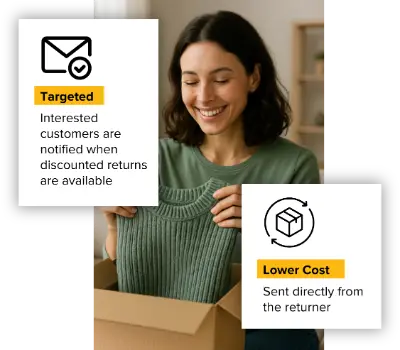How To Value Your eCommerce Business: A Comprehensive Guide

Last updated on October 18, 2023

In this article
 15 minutes
15 minutes
- How to Value an E-Commerce Business
- SDE
- EBITDA
- What are Add-Backs?
- What About Inventory?
- Pricing Windows
- What Goes Into a Multiple?
- Growth Trends
- Business Age
- Owner Involvement
- Stability of Earnings
- Strength of your Supply Chain
- Diversity of SKUs
- Stability and Diversity of Traffic
- Protecting Your Products
- Reap the Rewards of Your Hard Work through an Accurate Valuation
Building an eCommerce business can be an exhilarating and lucrative journey. You’ve likely poured your heart and soul into growing your brand, meticulously selecting products, and building an efficient supply chain.
However, when it comes to putting a price tag on your business, it’s not just about the sweat and toil you’ve invested. There are many other factors that come into play.
Whether you’re thinking about selling soon or simply want an accurate gauge of your business’s performance, understanding how to value your business is crucial.
We’ve sold hundreds of eCommerce businesses on our marketplace, so we know a thing or two about accurate valuations.
In this article, we’ll share some of that knowledge with you, taking a closer look at the factors that play a pivotal role in the valuation process.
So, let’s explore the ins and outs of valuing your eCommerce business.
How to Value an E-Commerce Business
While you likely already have a figure in mind when it comes to how much your business is worth, accurately valuing an eCommerce business hinges on important, measurable factors instead of gut feel.
While many factors play a role in valuations, the actual valuation formula is surprisingly simple.
Average Net Profit X Multiple = Valuation
As you can see, your net profit plays an important role in your valuation. This is because, for the most part, the more money a business makes, the more it is worth.
When calculating your net profit, it’s best to use a rolling 12-month average to account for any fluctuations in earnings or any seasonality the business experiences.
There’s more that goes into a valuation that we’ll discuss later on, but first, let’s take a closer look at the two most common methods used to calculate net profit.
Make Returns Profitable, Yes!
Cut shipping and processing costs by 70% with our patented peer-to-peer returns solution. 4x faster than traditional returns.
See How It WorksSDE
The first and most commonly used method is called seller discretionary earnings (SDE).
The idea here is to level the playing field by removing the current owner of the business from the equation. This allows for easier comparisons between different businesses, as it standardizes the earnings calculation by eliminating owner-specific variables.
To figure out SDE, you start with the business’s profit. Then, you add back the money the owner pays themselves, as well as any special benefits they get from the business (like health insurance).
One-time or non-recurring expenses are added back too, as they won’t affect a new owner. Non-cash expenses like interest, taxes, and depreciation are also added back, along with any other discretionary expenses.
SDE is the most common valuation method and most suitable for businesses up to around $5 million in annual revenue.
When businesses earn over this amount, they usually have a more complex structure in terms of a hierarchy of staff, as well as multiple stakeholders. This is where the EBITDA model comes in.
EBITDA
The Earnings Before Interest, Taxes, Depreciation, and Amortization (EBITDA) method uses a similar approach to SDE but acknowledges that larger businesses aren’t owner-operated in the same way.
When businesses scale up and get more complex, they often have a whole hierarchy of staff and multiple stakeholders. Therefore, unlike SDE, EBITDA won’t add back salaries for managers and employees, considering them necessary operational costs.
While EBITDA is a powerful tool, we won’t dive too deeply into it here, as it’s typically more relevant to larger enterprises and is unlikely to apply to many business owners reading this.
Nevertheless, understanding these two methods allows you to choose the right tool for the right job when it comes to assessing the value of your business. So whether you’re running a small Amazon FBA business or a bustling eCommerce empire, there’s a valuation method tailored to your unique circumstances.
What are Add-Backs?
Add-backs are costs that a new owner doesn’t need to incur to keep the business running. These expenses can also include one-time costs that won’t recur.
For instance, if you run an Amazon FBA business, the associated Amazon fees are considered a necessary operating expense. On the other hand, expenses related to a home office are not essential because eCommerce businesses can typically be managed remotely.
Therefore, a new owner wouldn’t need to continue the home office expense. This is why a home office is considered an acceptable add-back, while Amazon fees are not.
Some other examples of add-backs may include:
- Trademark expenses
- Personal travel costs
- A one-time website redesign
- Co-working space fees
- Subscription fees to industry newsletters and communities
It’s important to note that there can be some ambiguity regarding what qualifies as an add-back, and there might be disagreements between the broker, buyer, and seller.
Generally, eCommerce store add-backs tend to be relatively small compared to the overall earnings of the business. Therefore, if certain costs are not added back in, they usually won’t have a significant impact on the final valuation.
In case there’s uncertainty or disagreement about an add-back, it’s crucial to ensure that it’s clearly documented in the profit and loss (P&L) statement. This transparency allows potential buyers to analyze the add-back as part of their due diligence process, helping them make informed decisions about the business.
What About Inventory?
When it comes to determining the value of an eCommerce business, inventory is normally excluded from the calculation.
Inventory only becomes significant when your store has recently faced stock shortages or foresees upcoming supply chain or manufacturing difficulties.
The reason behind this exclusion is that if the buyer can’t sell the inventory, it loses its value. Moreover, perishable goods may, well, perish if they can’t be sold quickly.
For these reasons, inventory is typically treated as an additional cost for the buyer, based on the product’s landed cost. This approach ensures fairness for both the seller and the buyer.
At Empire Flippers, we don’t charge a commission on the inventory’s cost, but it’s worth noting that some business brokers do. It’s crucial to consider what happens to inventory when selecting a broker for selling your business.
Pricing Windows
Referring back to the valuation formula, we mentioned that it’s best to use a rolling 12-month average in your calculation. This is known as a pricing window.
It’s essentially the length of time we calculate the profits over. The length of the pricing window can fluctuate to best reflect the current state of the business.
A 12-month pricing window is the most desirable option as it presents the most accurate representation of the business as a whole, rather than only capturing a sharp period of growth or decline.
For example, if you sell jet skis, you likely experience a slump in sales over the winter months, and then an increase in summer, with a larger boost over the summer holidays. A 12-month pricing window will accurately reflect these ups and downs.
Since a 12-month window gives the most accurate reflection of the business’s health, it makes the business more desirable to buyers.
That said, there are some instances where you may want to use a shorter pricing window.
This is most common in businesses that have experienced rapid growth or steep decline. It may have taken a hit from a Google algorithm update and declined as a result, or it could be experiencing an acceleration of demand. In these cases, the current state of the business may be drastically different compared to 6 months ago.
A shorter pricing window can also benefit fledgling businesses where the initial months were primarily about getting the business off the ground. During this early phase, revenue tends to surge, and the most recent six months better depict the business’s present state.
A shorter pricing window reflects a level of uncertainty and instability and therefore results in a lower multiple and smaller pool of buyers.
Speaking of multiples, let’s take a closer look at what goes into this crucial part of the valuation formula.
Convert Returns Into New Sales and Profits
Our peer-to-peer returns system instantly resells returned items—no warehouse processing, and get paid before you refund.
I'm Interested in Peer-to-Peer ReturnsWhat Goes Into a Multiple?
The multiple is essentially a representation of the strength, stability, and potential of your business. In other words, all of the other things buyers care about over and above profitability.
Almost all aspects of your business will be considered when determining a multiple.
Here are some of the main considerations that will be taken into account when valuing an eCommerce business.
Growth Trends
The direction your business is heading is one of the first things buyers scrutinize when assessing whether your business is the right fit for them.
Clearly, upward growth is more enticing than the opposite, and it often leads to a higher valuation for your store.
Yet, it’s not just about whether you’re growing; the rate of growth matters too.
While hyper-growth is exciting, most buyers prefer a sustainable eCommerce store. Rapid expansion can be unpredictable, leaving buyers wondering where it will plateau. Scaling aggressively can also come with inefficiencies, which buyers will investigate during due diligence.
At the end of the day, businesses that can demonstrate stable, healthy growth trends will attract the largest pool of buyers.
But if your business doesn’t fall into this category, don’t let that deter you from putting your business on the market. While most buyers look for growing businesses, others seek businesses with untapped potential in processes or marketing channels, recognizing room for improvement.
Even declining businesses can find buyers, though the severity of the decline will affect the valuation. These businesses generally command lower multiples due to the reduced buyer interest.
Business Age
A business is typically judged on its track record, with buyers assessing the consistency of its profitability and performance over time.
While many businesses experience rapid or gradual growth over a short period, one that consistently earns over several years proves its stability.
It also takes time for a business to establish itself within a niche. A long-standing business showing steady growth has likely secured a position as a leader in its specific market segment.
Therefore, businesses with a longer track record typically receive higher valuations.
A business with less than a year of profitability is considered young, lacking sufficient data to demonstrate market staying power.
Once a business crosses the two-year mark, it likely finds its footing, catching the attention of more buyers. For those with three or more years of profitability, they’ve not only proved their worth but can often command a higher multiple.
Owner Involvement
For the most part, buyers are looking for an investment, an opportunity that will get them one step closer to financial freedom. They are not looking for a full-time job that requires them to work tirelessly after investing thousands of dollars.
While it can be challenging to entrust others with your hard-built store, excessive owner involvement can deter potential buyers.
Ideally, spending around five to ten hours a week on your business is acceptable, but beyond that, it may adversely impact the valuation multiple.
Fortunately, many eCommerce tasks can be outsourced, such as order fulfillment and customer service, often without the need for full-time employees. Implementing standard operating procedures (SOPs) simplifies task delegation and can be valuable during the sale process, helping buyers understand your operations.
Before selling, communicate with freelancers you’ve employed to ensure their willingness to collaborate with the new owner. Transferring your team streamlines the transition and enhances your business’s appeal.
Put simply, the key to making your business more marketable and scalable is to make yourself redundant.
Stability of Earnings
Buyers are on the hunt for a healthy business that promises a solid return on their investment. This makes the stability of your earnings a key concern.
Steady earnings indicate that your business operates on optimized processes, you have a reliable supply chain, and an established customer base.
Unstable earnings, on the other hand, may point to underlying issues within the business, such as inventory mismanagement or a lack of product-market fit.
Stability in your earnings also indicates that your business has built-in defensibility to help it ride out natural fluctuation in the market.
At the end of the day, buyers are looking for an income they can rely on, regardless of changing trends or economic conditions.
Strength of your Supply Chain
Your supply chain forms the very backbone of your eCommerce store, with the success of your business hinging on how products are manufactured and delivered to your customers.
To fortify your supply chain, consider sourcing from at least two different manufacturers, ideally from different countries. This strategic move provides flexibility, allowing you to pivot quickly to avoid unexpected delays, as demonstrated during the global pandemic’s restrictions.
Outsourcing fulfillment is equally crucial. Handling inventory in-house can complicate the sale of your business. Remember, the majority of buyers are looking for a streamlined, turnkey business. They don’t want the complication of managing fulfillment and storage over and above running the business.
Consider hiring a third-party logistics (3PL) provider. These specialists manage inventory and ensure timely customer delivery.
Formalize agreements with manufacturers and fulfillment providers whenever possible. Buyers will value transferable deals, especially if you’ve negotiated advantageous rates. Contracts can serve as valuable assets for your business.
Diversity of SKUs
Buyers will also pay close attention to the diversity of your product offerings.
Having a variety of different products prevents the business from relying solely on one item. You’re essentially ensuring that all your eggs aren’t in one basket.
If one product faces a drop in popularity, gets delisted on platforms like Amazon, or falls out of favor due to new laws or regulations, your business can still thrive thanks to the revenue generated by your other products.
All of this works towards protecting the buyer’s return on investment once they take over the business.
Stability and Diversity of Traffic
Much like with your earnings, buyers are looking for stability when it comes to traffic growth. Buyers will want to dig deeper into any sudden spikes or dips in traffic to understand the underlying reasons behind these fluctuations.
Buyers and business brokers will also need an easy way to view your traffic data, so it’s a good idea to have an analytics platform like Google Analytics or Clicky installed on your website. To protect any sensitive data, make sure you give buyers read-only access.
This will allow buyers to look at data like:
- The geographic sources of your traffic
- Top-performing website pages by traffic percentage
- The bounce rate.
These details provide valuable insights into what’s working effectively and where potential opportunities lie.
Traffic channels that drive revenue are another area where diversification is key. While most eCommerce businesses use paid advertising to attract customers, pairing this with organic traffic from search engine optimization (SEO) is particularly attractive.
Unlike paid ads, SEO requires minimal ongoing investment once it’s established. Having a strong social media following and a robust email list are also great ways to diversify your traffic.
No More Return Waste
Help the planet and your profits—our award-winning returns tech reduces landfill waste and recycles value. Real savings, No greenwashing!
Learn About Sustainable ReturnsProtecting Your Products
Trademarks are another factor that speaks to the longevity of your business.
A buyer doesn’t want to purchase the business only to have a competitor undercut the business by selling the same products.
Trademarking your products shields your brand identity and reputation from copycats and counterfeit products, reassuring buyers and reducing the risk of competition dilution.
If you sell on Amazon, registering your brand as part of Amazon’s Brand Registry adds yet another layer of defensibility to your business.
Reap the Rewards of Your Hard Work through an Accurate Valuation
Knowledge really is power. When it comes to making a life-changing decision like selling your eCommerce business, you’ll want all the power you can get.
Knowing how to value your business empowers you to make informed choices.
This knowledge means you won’t go into a sale blind. You’ll be armed with the information you need to confidently negotiate with buyers and avoid falling for lowball offers.
Understanding the metrics and factors that play a role in valuations also gives you a checklist to work from in order to increase the value of your business and make it more attractive to buyers.
As you can see from this article, valuing an eCommerce business is a complex and nuanced process. But don’t let that stop you. If you’re not a numbers person or simply don’t have the time to do in-depth calculations, you can use our free valuation tool to get an idea of how much your business is worth.
Discovering the true value of your eCommerce business gets you one step closer to a profitable exit!

Lauren Buchanan, Empire Flippers

Turn Returns Into New Revenue




